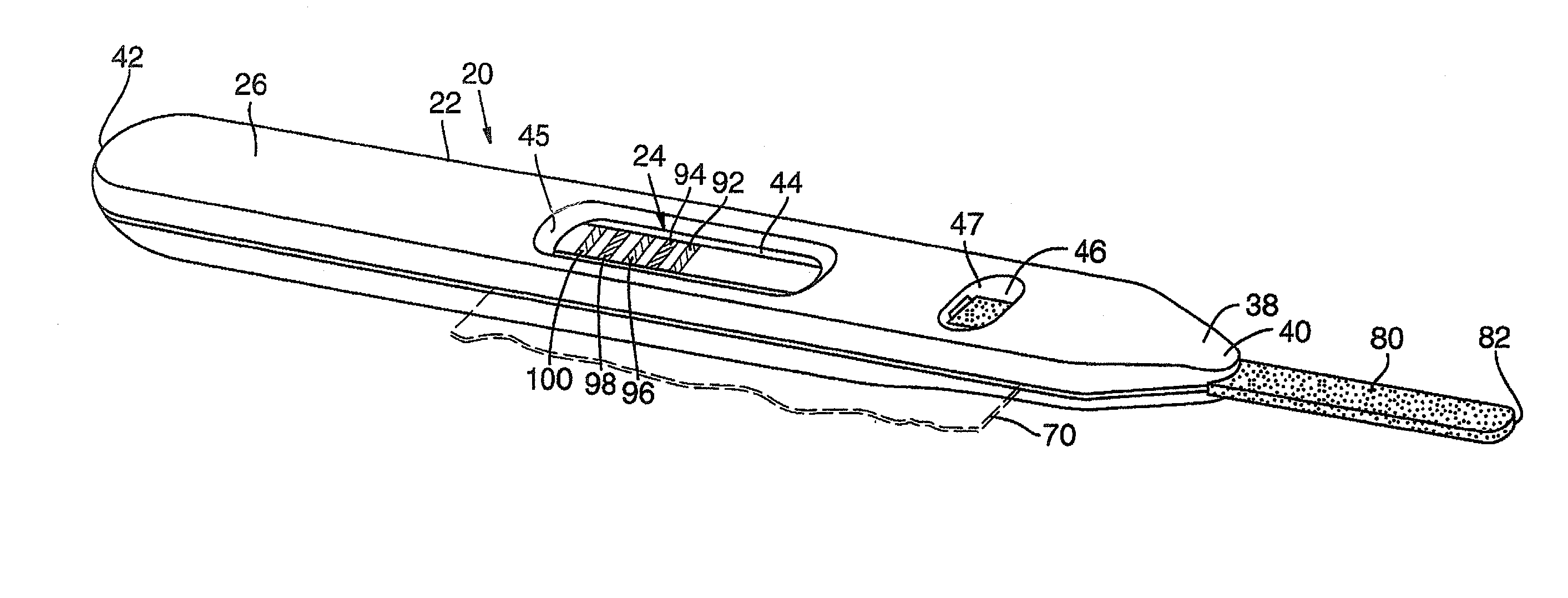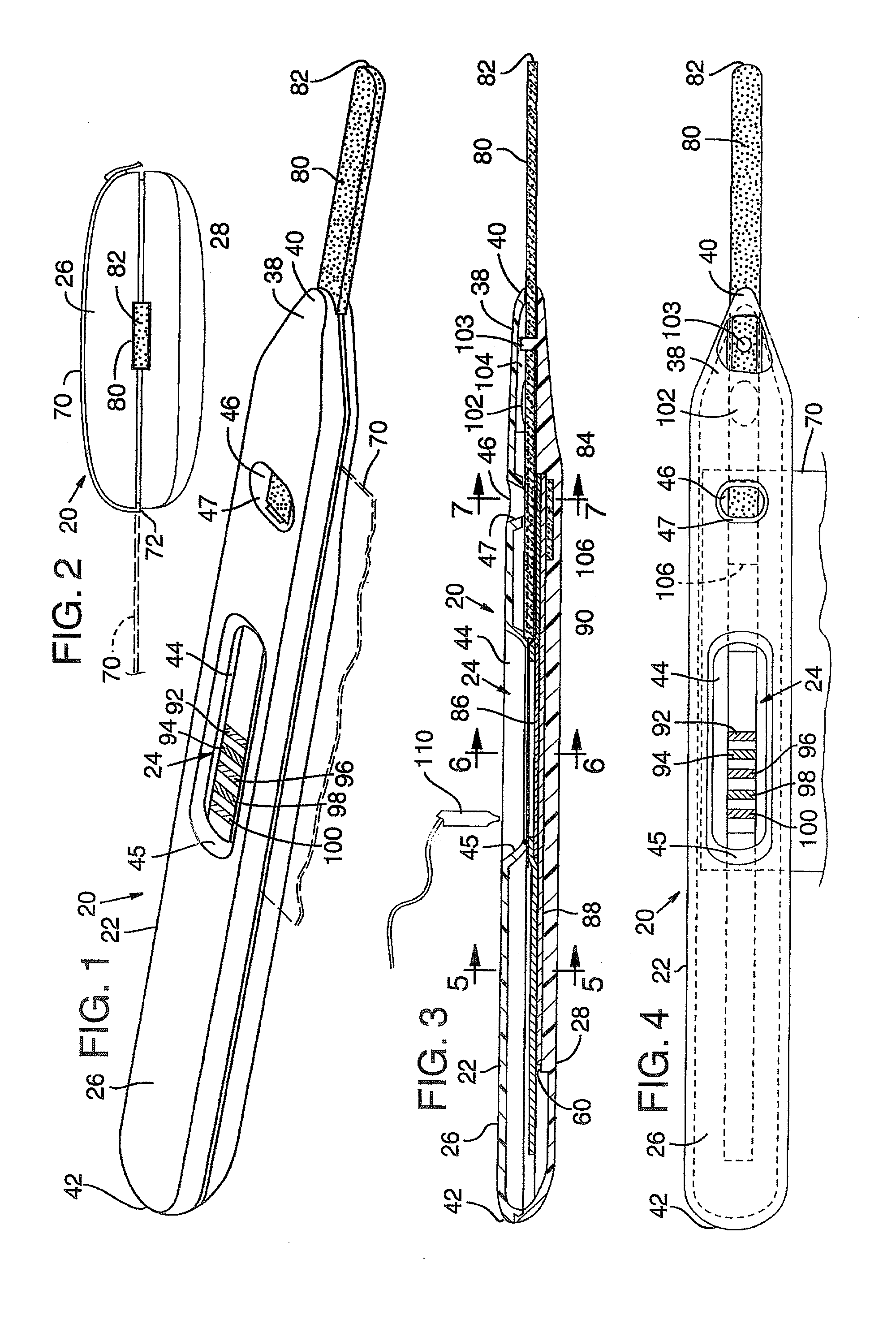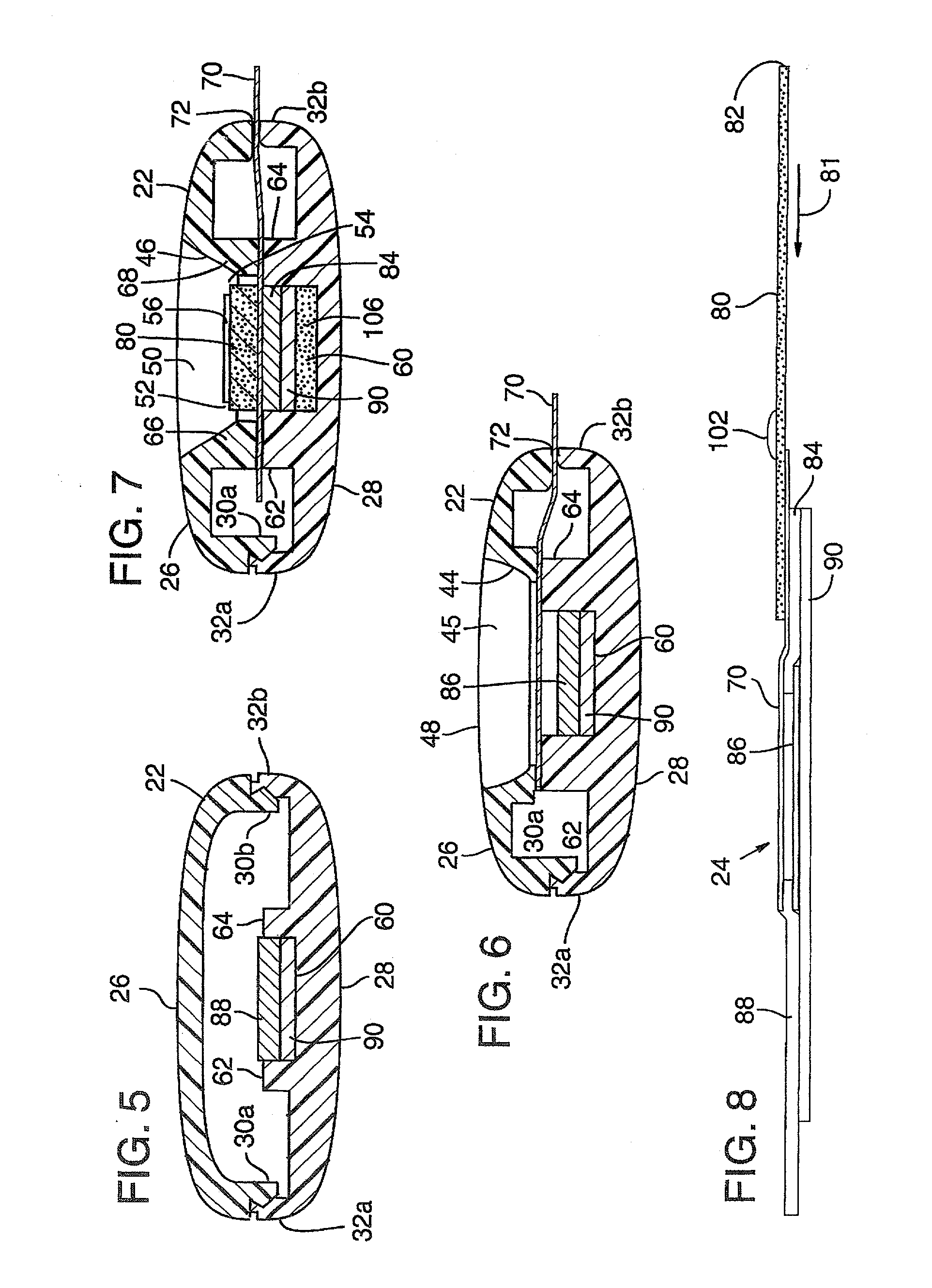Collection device for lateral flow chromatography
a collection device and lateral flow technology, applied in the field of assays, can solve the problems of difficult to positively identify specimens as coming from particular individuals, awkward or distasteful to obtain specimens for analysis, and obstacles to both clinical and home use, and achieve the effect of improving the contiguous conta
- Summary
- Abstract
- Description
- Claims
- Application Information
AI Technical Summary
Benefits of technology
Problems solved by technology
Method used
Image
Examples
example 1
[0094]The preferred embodiment of the device is injection molded using white polypropylene plastic (as shown in FIG. 1), and has a finished overall length of 5± 1 / 32 inch, a width of ⅝± 1 / 32 inch, and a finished height (depth) of ⅜± 1 / 32 inch.
[0095]The device is molded in two pieces, an upper piece and a lower piece, with interlocking tabs along the long sides to hold the two pieces together in the correct relationship. The posterior ends of the device are shaped (rounded) to present an attractive appearance. All other surfaces are chamfered to eliminate all sharp edges, with a chamfer radius of about 0.015625 inch. The upper and lower piece together cooperatively define therebetween a slot for the oral collection device in the anterior tip with sufficient dimension (height and width) so as not to interfere with the sample flow from the oral collector to the proximal wick (e.g. 84 in FIG. 8).
[0096]The device includes a sufficiency indicator window (46 in FIG. 1) in the upper piece 2...
PUM
| Property | Measurement | Unit |
|---|---|---|
| height | aaaaa | aaaaa |
| height | aaaaa | aaaaa |
| chamfer radius | aaaaa | aaaaa |
Abstract
Description
Claims
Application Information
 Login to View More
Login to View More - R&D
- Intellectual Property
- Life Sciences
- Materials
- Tech Scout
- Unparalleled Data Quality
- Higher Quality Content
- 60% Fewer Hallucinations
Browse by: Latest US Patents, China's latest patents, Technical Efficacy Thesaurus, Application Domain, Technology Topic, Popular Technical Reports.
© 2025 PatSnap. All rights reserved.Legal|Privacy policy|Modern Slavery Act Transparency Statement|Sitemap|About US| Contact US: help@patsnap.com



